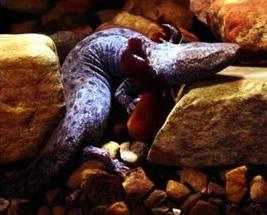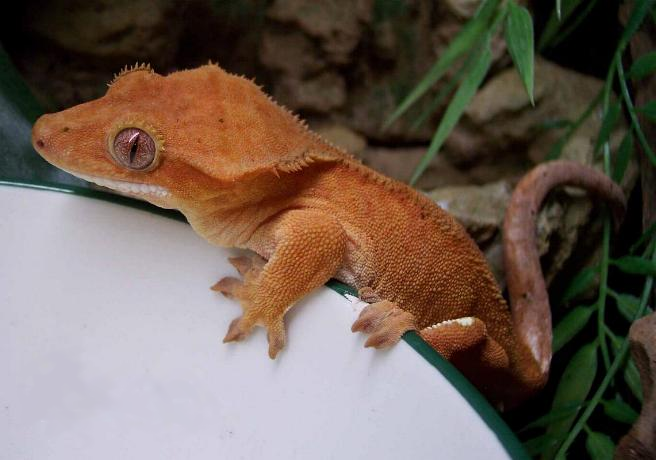 A bacterium that naturally occurs on the skin of certain frogs and salamanders has been shown to protect these animals from infection by a deadly Chytrid fungus infection. Chytrid fungus, known as Batrachochytrium dendrobatidis, has been very much in the news since its discovery in 1999. It is believed to have caused the extinction of up to 200 amphibian species, and is still spreading in many countries. Read More »
A bacterium that naturally occurs on the skin of certain frogs and salamanders has been shown to protect these animals from infection by a deadly Chytrid fungus infection. Chytrid fungus, known as Batrachochytrium dendrobatidis, has been very much in the news since its discovery in 1999. It is believed to have caused the extinction of up to 200 amphibian species, and is still spreading in many countries. Read More »
The Natural History and Captive Care of the Mudpuppy – Part 1
 A Mudpuppy (Necturus maculosus) was the first large aquatic salamander I kept in captivity, and I remain as intrigued by them today as I was in childhood. Increasingly rare in the wild, Mudpuppies or Waterdogs make quite hearty captives if attention is given to their unique needs. Today we’ll take a peek at their lives in the wild, and move on to husbandry in Part 2.
A Mudpuppy (Necturus maculosus) was the first large aquatic salamander I kept in captivity, and I remain as intrigued by them today as I was in childhood. Increasingly rare in the wild, Mudpuppies or Waterdogs make quite hearty captives if attention is given to their unique needs. Today we’ll take a peek at their lives in the wild, and move on to husbandry in Part 2.
Classification
The Mudpuppy shares the Family Proteidae with 4 similar species, all native to North America, and the Olm (Proteus anguinus). The Olm, limited in distribution to Northern Italy and the Balkans, spends its entire life in subterranean streams (please see photo of white salamanders). I’ll highlight this blind, other-worldly creature in the future. Read More »
The Painted Turtle – Notes on Captive Care and Natural History
This article is one of a series in which I plan to provide a brief introduction to both popular and rarely-kept amphibians, reptiles and invertebrates. I’ll cover such topics as unique habits in the wild, common concerns in captive care, pet pros and cons, husbandry tips and so forth. Detailed care articles will follow…until then, I would enjoy receiving your questions and comments. Today we’ll take a look at the most widespread of all North American Chelonians, the Painted Turtle (Chrysemys picta). Read More »
The Dwarf Chameleons – Notes on Captive Care and Natural History
This article is one of a series in which I will provide a brief introduction to both popular and rarely-kept amphibians, reptiles and invertebrates. I’ll cover such topics as unique habits in the wild, common mistakes or concerns in captive care, pet pros and cons, little-known husbandry tips and so forth. Detailed care articles will follow…until then, I would enjoy receiving your questions and comments. Today we’ll take a look at the Dwarf Chameleons (Brachypodion spp.). Read More »
Introducing the Nosy Be Gecko (or Spearpoint Leaf-Tailed Gecko) – Part 2
 Please see Part 1 of this article for information on an interesting newcomer to the pet trade, the Nosy Be Gecko (Uroplatus ebenaui). Today we’ll take a look at some related species and the gecko family in general.
Please see Part 1 of this article for information on an interesting newcomer to the pet trade, the Nosy Be Gecko (Uroplatus ebenaui). Today we’ll take a look at some related species and the gecko family in general.
Other Geckos in the Genus Uroplatus
All 12 species that have been assigned to the genus Uroplatus, collectively known as “Leaf-Tailed Geckos”, are endemic to Madagascar and considered threatened due to extensive deforestation. Cryptic colors, nocturnal ways and arboreal habitats render it likely that other species await discovery…hopefully before they disappear forever. Read More »
 That Reptile Blog – Reptile, Amphibian and Exotic Pet Care and Information
That Reptile Blog – Reptile, Amphibian and Exotic Pet Care and Information
